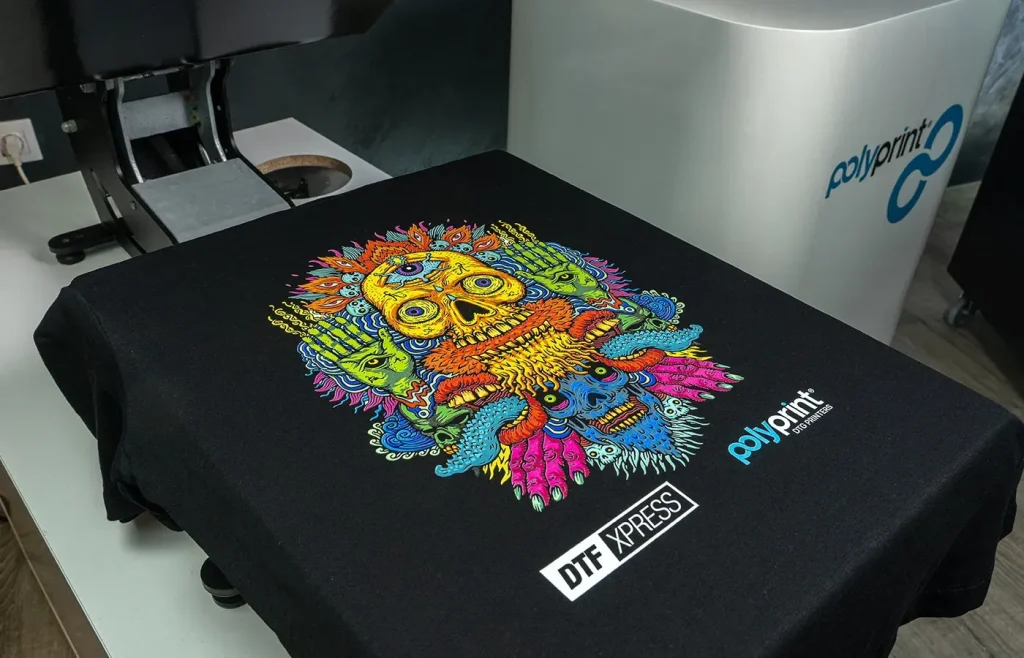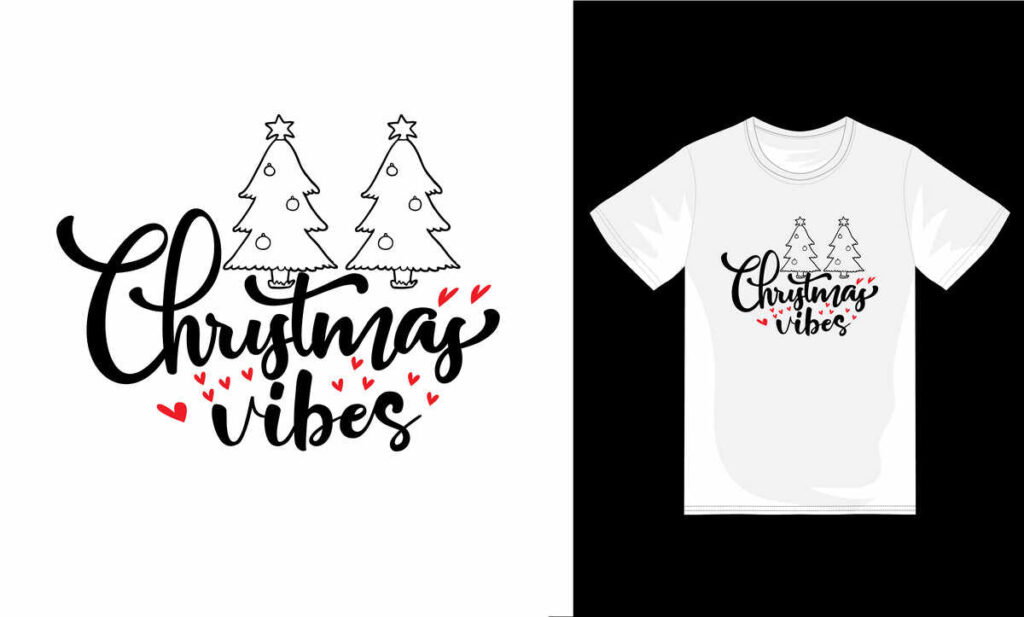DTF printing, or Direct to Film printing, has surged in popularity among creatives and manufacturers alike due to its remarkable versatility and stunning quality. This innovative method allows for vibrant, high-resolution prints on various textiles, making it a go-to choice for customized apparel and promotional items. To ensure your DTF printing projects are not only visually striking but also durable, it’s important to embrace effective techniques and follow best practices for DTF printing. In this article, we’ll share 10 invaluable DTF printing tips that will set you on the path to success. Whether you’re a beginner learning how to do DTF printing or an experienced user looking to enhance your results, these guidelines will transform your printing endeavors into a seamless experience.
Direct to Film printing, often referred to as DTF transfer printing, has become a favored technique within the graphic and apparel industry for its endless possibilities and outstanding results. This modern printing method provides excellent color fidelity and durability, making it perfect for a wide array of printing projects, including custom designs and promotional merchandise. By adhering to optimal procedures, you can ensure that your DTF transfer projects not only stand out for their visual appeal but also last through multiple washes and wears. This guide will outline essential practices and tips that contribute to successful DTF printing outcomes. Discover how mastering this process can elevate your printing capabilities and creativity.
Essential Tips for DTF Printing Success
Achieving success in DTF printing begins with a clear understanding of the basics. It’s essential to focus on high-quality films, as they serve as the backbone of your printing project. High-quality PET films not only produce vibrant colors but also improve adhesion, ensuring your designs remain durable through multiple washes. By choosing premium films, you set the stage for crisp, eye-catching prints that stand out in the market.
In addition to quality films, maintaining optimal printer settings is vital. Regular calibration and checks create a consistent flow of accurate colors and details in your prints. Just like an artist fine-tuning their palette, a well-calibrated printer reflects your creative intentions accurately, making it crucial in the realm of DTF printing.
Choosing the Right DTF Inks and Films
The selection of suitable inks is just as significant as the film choice. DTF inks are specially formulated to adhere to the PET films during the transfer process. This includes understanding that generic inks may not provide the vibrancy or permanence you would expect. Prioritizing quality inks can lead to remarkable prints that maintain their integrity even after repeated use.
Moreover, matching your ink with the right film can significantly impact the final product. Every aspect from adhesion to color richness is influenced by this choice. Thus, investing time into researching and sourcing high-quality DTF inks tailored for your printing equipment is a best practice that won’t go unnoticed in the results.
Mastering DTF Printing Techniques
Pre-treatment is an often-overlooked step that can considerably enhance the outcomes of your DTF printing projects. By applying a pre-treatment solution, you can improve the transfer adhesive’s ability to bond with the fabric, ultimately ensuring that the prints last longer. This step is a game-changer in preventing issues like peeling or cracking, which can mar an otherwise perfect print.
Equally important are the heat and pressure settings used during the transfer process. Consistency in these parameters is essential for even adhesion across the entire design. Properly training yourself on the recommended settings for your specific DTF printer and related materials will pave the way for an improved transfer experience.
The Importance of Cooling and Transfer Techniques
Cooling the printed film before the transfer is a critical step that should never be bypassed. Allowing the film to cool completely helps maintain the integrity of your design and prevents smudging. This seemingly minor detail can make a major difference in the quality of the final print, ensuring that the colors and details remain sharp and vibrant.
Additionally, mastering the transfer technique will safeguard against incomplete or uneven prints. Using consistent pressure and ensuring even heat distribution can significantly impact the final product. Using a professional-grade heat press can further optimize this aspect, making it a worthwhile investment for serious DTF printing enthusiasts.
Post-Press Care for DTF Prints
After executing the transfer, post-press care is paramount. Allowing the design to cool down before peeling the film can enhance its adhesion and overall appearance. If the film is removed too soon, you risk damaging the print, affecting its longevity and look. This simple yet often overlooked step is key in ensuring your hard work pays off.
Moreover, consider the long-term care of your DTF prints. Educating yourself on proper washing and drying techniques will help maintain the quality of your designs. This knowledge ensures that your prints look fresh and vibrant for as long as possible, earning the trust of your customers.
Best Practices for Storing DTF Materials
Proper storage of your DTF materials is one of the best practices that will maximize their lifespan and functionality. Keeping films, inks, and adhesives in a cool, dry space protects them from damage and degradation. This step is crucial for maintaining high-quality materials ready for your next printing project.
Furthermore, organizing your workspace in a way that allows easy access to these well-preserved materials will enhance efficiency. Having a systematic approach not only promotes better workflow but also ensures consistency in quality, reinforcing the results you achieve in your DTF printing projects.
Frequently Asked Questions
What are some essential tips for successful DTF printing?
To achieve successful DTF printing, consider these essential tips: use high-quality PET films, regularly calibrate your printer for color accuracy, and choose premium DTF inks tailored for your printer. Pre-treating films can enhance adhesive performance, and using correct heat settings (typically 320°F for 10-15 seconds) is crucial for transfers. Always apply powder adhesive evenly and let the film cool before pressing for best results.
How do I ensure the best practices for DTF printing?
For best practices in DTF printing, focus on using high-quality materials, calibrating your printer regularly, and applying proper pre-treatment to your films. Monitor your heat press settings closely, ensure even powder adhesive application, and employ consistent pressure during transfers. Lastly, practice proper post-press care to enhance adhesion and finalize your designs correctly.
What should I consider when starting my first DTF printing project?
When starting your first DTF printing project, ensure you are using high-quality PET films and premium DTF inks. Familiarize yourself with printer calibration and pre-treatment processes. Additionally, understand the importance of heat settings and pressure application for achieving clear and durable prints. Taking time to follow these fundamentals can lead to successful outcomes.
What are common mistakes to avoid in DTF printing?
Common mistakes in DTF printing include using low-quality films, neglecting printer calibration, and improper heat settings. Avoid uneven powder adhesive application and transferring while prints are still warm, as this can lead to poor adhesion. Also, don’t rush peeling off transfer films; allowing cooling time is essential for quality.
How can I improve the quality of my DTF printing results?
To improve DTF printing results, focus on using high-quality materials, ensuring your printer is calibrated correctly, and selecting the right inks. Implementing pre-treatment strategies and adhering to recommended heat settings are crucial. Additionally, allow for adequate cooling times and incorporate even pressure during transfers to enhance print quality.
Can I use any printer for DTF printing?
Not all printers are suitable for DTF printing. It’s essential to use a printer compatible with DTF technology and equipped for high-quality ink printing. Printers designed for DTF printing work best with specialized inks and films, providing vibrant colors and durability. Always check manufacturer specifications before purchasing.
| Tip Number | Key Point |
|---|---|
| 1 | Use high-quality PET films for vibrant colors and excellent adhesion. |
| 2 | Regularly calibrate your printer for accurate color consistency. |
| 3 | Choose high-quality DTF inks for better durability. |
| 4 | Consider pre-treatment for improved adhesive bonding. |
| 5 | Use appropriate heat settings for effective transfers. |
| 6 | Apply powder adhesive evenly and shake off excess. |
| 7 | Allow films to cool completely before transferring. |
| 8 | Apply even pressure during the transfer process. |
| 9 | Let prints cool before peeling off the film. |
| 10 | Store materials in a cool, dry place to maintain quality. |
Summary
DTF printing has revolutionized the way we approach garment decoration, presenting a multitude of advantages for color-rich designs. To maximize the efficiency and results of DTF printing projects, it is essential to adhere to key practices such as using high-quality films, optimizing ink selections, and maintaining proper equipment settings. Understanding the nuances of the DTF printing process, from pre-treatment to post-press care, allows for the production of durable and vibrant prints. Whether you’re a seasoned professional or new to the field, applying these expert tips will undoubtedly enhance your printing outcomes and lead to more successful projects.



